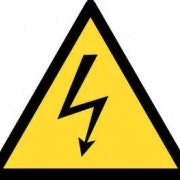New bionic leaf a solar storage solution?
Researchers from Lawrence Berkeley National Laboratory are developing a new bionic leaf that can convert energy from sunlight into an energy-dense fuel, imitating the photosynthetic process of plants. We’ve covered the artificial leaf concept before but aside from using a cool new name (bionic leaf sounds much cooler than artificial leaf, right?) the Berkeley project represents a new twist on the technology that could lead to far greater efficiencies.
The artificial leaf concept
Whether you call it an artificial leaf or a bionic leaf, the basic concept is relatively simple. Instead of using a photovoltaic cell to generate electricity directly from sunlight, you deploy a chemical reaction that stores solar energy in the form of hydrogen, which you can then use in a hydrogen fuel cell to generate electricity.

Bionic leaf courtesy of Berkeley Lab.
That sunlight-to-hydrogen chain means you can store solar energy indefinitely, potentially in huge quantities, so think of it as a kind of battery and you’re on the right track. The fuel cell connection means that the intermittent nature of solar energy is not an issue, and neither is its resistance to mobility.
As for how you get there, you drop a photoelectrochemical cell in a bucket of water and let it go to work stripping out the hydrogen.
That’s a much more sustainable way to produce hydrogen than the current standard, which involves a good deal of fossil energy. With Toyota, GM and other auto manufacturers poised to deliver hydrogen fuel cell vehicles to the mass market, the race is on to develop solar powered hydrogen production at scale.
The Berkeley Lab bionic leaf
The trick behind the photoelectrochemical cell is to find the right combination of materials that give you a cost-effective reaction, otherwise your bionic leaf is going to sit in the lab and amuse visitors forever.
We’ve been following one solution, an actual leaf-sized artificial leaf that is being developed with a focus on low cost materials to serve households in underserved communities. The absolute efficiency of the cell is not as important as the overall cost, since in this market electricity consumption is almost negligible (in the latest development, the artificial leaf has been tweaked to function effectively in impure water).
The Berkeley team is also taking cost into consideration while moving along a tack that is focused on revving up the performance of the photocathode at the molecular level (the cathode is the part of the cell that generates an electrical current).
The team has been focusing on a hybrid photocathode of gallium phosphide (a semiconductor that absorbs visible light), and cobaloxime, a hydrogen-producing catalyst.
Both materials are relatively abundant and inexpensive compared to conventional precious metal catalysts like platinum.
So far, so good. The team just published its latest analysis of the photocathode in the journal Physical Chemistry Chemical Physics under the title “Energetics and efficiency analysis of a cobaloxime-modified semiconductor under simulated air mass 1.5 illumination,” which demonstrated that almost 90 percent of the electrons generated by the hybrid material were stored in the target hydrogen molecules.
The team has also found that the ability of the gallium phosphide to absorb solar energy is far outstripping the ability of the cobaloxime to catalyse a reaction. The result is that only 1.5 per cent of the photons that hit the surface get converted into a photocurrent.
So, the search is on for a faster and more efficient catalyst.
Entering the Age of the Bionic Leaf
The cathode is just one part of the equation, by the way. For example, a multinational research team has been working on a low cost, high efficiency electrode made from iron oxide (aka rust).
For a completely different angle on sustainable hydrogen production, you can also check out the thermochemical process under way at a municipal wastewater treatment facility in California.
Tina Casey specialises in military and corporate sustainability, advanced technology, emerging materials, biofuels, and water and wastewater issues.
This article, New Bionic Leaf Could Solve Solar Energy Storage Problem, is syndicated from Clean Technica and is posted here with permission.















